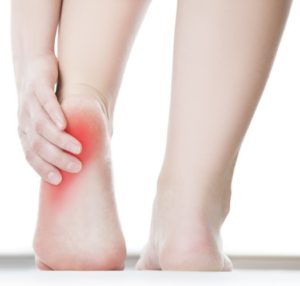 The heel bone is the largest bone in your foot, and it provides stability to your ankle joint. However, due to its size and location, it is also prone to injury. One condition that can set in is the development of a heel spur. These bony calcium deposits can form on the underside of the heel bone, leading to pain and discomfort. Today, we explain why they set in, how to treat them, and how to prevent them from developing in the first place.
The heel bone is the largest bone in your foot, and it provides stability to your ankle joint. However, due to its size and location, it is also prone to injury. One condition that can set in is the development of a heel spur. These bony calcium deposits can form on the underside of the heel bone, leading to pain and discomfort. Today, we explain why they set in, how to treat them, and how to prevent them from developing in the first place.
Causes and Symptoms of Heel Spurs
As we mentioned above, heel spurs are the result of bony calcium growths on the bottom of your heel, but why do they develop in the first place? Oftentimes they develop because of excessive stretching of the plantar fascia. This process stretches this band of tissue, and that results in microtearing of the membrane that covers the heel bone. As these tissues heal, small calcium deposits can form, and over time they can grow in size to the point where they become problematic. Because of the way in which they develop, some of the risk factors associated with heel spur development include regular running, poorly fitted shoes, excessive weight, spending a lot of time on your feet and having flat feet or high arches.
Symptoms of heel spurs include:
- Intermittent or chronic heel pain
- Foot pain while jogging or exercising
- A pins and needles-like sensation in their foot.
- Foot pain in the morning that dulls throughout the day.
Treatment and Prevention Techniques
As is the case with many conditions, heel spurs can be treated either conservatively or surgically. Rest isn’t always the best course of action when it comes to treating heel spurs, because the fascia will always be going from a relaxed state to an active state whenever you take your next step, which will cause flareups. Instead, you should consult with a foot specialist, who will likely recommend a course of stretching exercises to restrengthen the plantar fascia, physical therapy, shoe inserts/modifications, or exercise adjustments to take pressure off the heel. These treatment options will likely be coupled with over-the-counter NSAIDs, like acetaminophen or ibuprofen.
If conservative treatments fail, a more hands-on approach may be necessary. The next step may be to see if the spur responds to a corticosteroid injection to help relieve some of the inflammation that is brought upon by the spur.
Roughly 90 percent of people notice that symptoms decrease or disappear with conservative treatment, but that means about 10 percent of people will need surgical intervention to experience relief. Surgery usually has two goals, to release the plantar fascia and to remove the aggravating spur. The majority of patients who undergo this operation will achieve positive results, and only in rare cases are their complications like nerve damage, infection or scarring.
However, the best way to treat heel spurs is to prevent them from developing in the first place. As you may have guessed based on the causes, some of the best ways to prevent heel spurs is by maintaining a healthy weight, wearing proper fitting shoes, and by stretching and warming up prior to athletic activity.